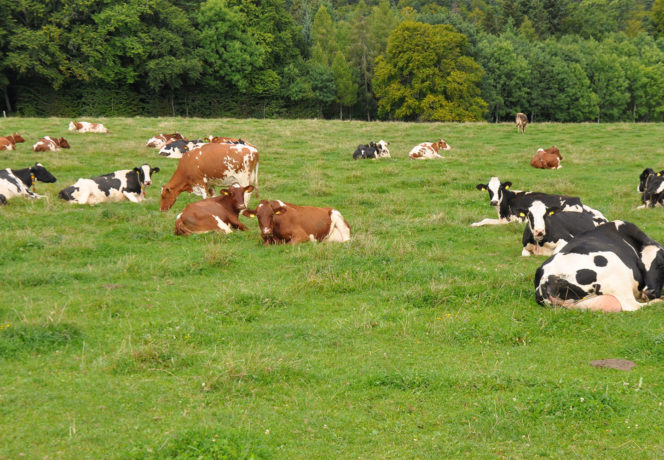
Archive
758 posts

When planning stocking density on pasture, the preliminary calculation of the surface-area requirement is based on an estimate of the forage production potential. Since the year 2000, grass growth has been measured in various intensively-to-semi-intensively-managed grasslands in the southwest of Switzerland. The dynamism and amplitude over the course of the year of 226 growth curves…

Meadow foxtail: a new recommended variety for Swiss forage production
From 2014 through 2016, the Agroscope research stations tested three varieties of meadow foxtail in comparative variety trials at six locations. The parameters assessed were forage yield, competitive ability, vigour, juvenile development, resistance to diseases, digestibility, adaptation to higher altitudes and persistence. For each variety, an index value based on measurements and observations of yield…
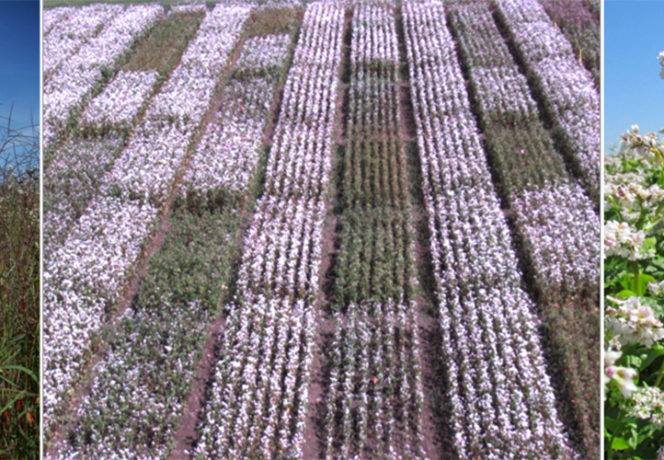
Weed control in buckwheat: comparison of five selected herbicides
Buckwheat is an orphan crop in Switzerland which has lately been gaining attention due to its gluten-free flour and the high biological value of its protein. In order to establish the conditions for conventional production of buckwheat, two pre-emergence and three post-emergence herbicides were tested as to their suitability for controlling weeds in this crop.…
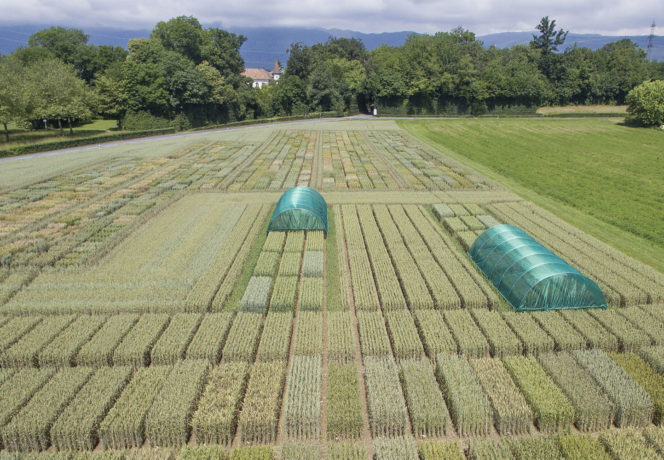
Winter wheat: a review of 15 years of variety research on extensively managed land
For a new variety of wheat to be marketable in Switzerland or abroad, it must go through a series of tests to ensure its superiority to already-cultivated varieties in terms of grain yield, quality, and resistance to disease. In this process, which is termed a «variety testing», the «best of the best» is chosen. That…

Perennial ryegrass: new varieties recommended for Swiss ley farming
From 2014 to 2016, Agroscope carried out variety trials with perennial ryegrass (Lolium perenne). Yield, vigour, juvenile development, competitive ability, persistence, resistance to leaf diseases and bacterial wilt, winter-hardiness, feed digestibility and suitability for cultivation at higher altitudes were all evaluated. For the first time, ploidy was taken into account for the assessment. Six new…
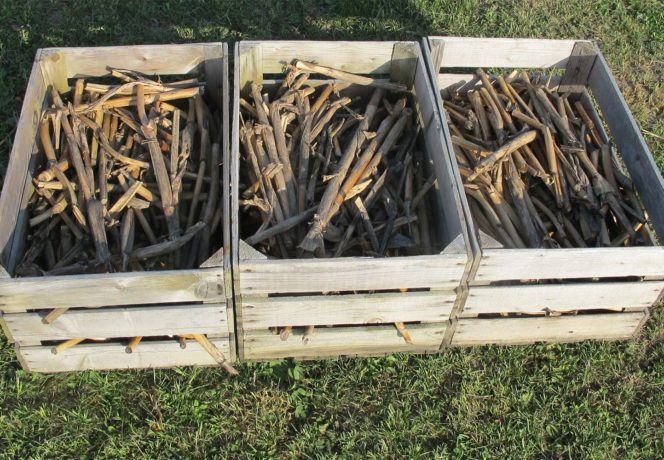
Development and validation of a phenological model for the european corn borer
A phenological model for the European corn borer Ostrinia nubilalis Hübner race with one generation per year was developed and validated by Agroscope. This model replaces the previous time-consuming method for predicting the optimal time for implementing measures to control the corn borer (Derron and Goy 2006). The conventional method consists in predicting the flight…

GM potato plants are resistant to late blight
Late blight of potato, caused by the pathogen Phytophthora infestans, is the most significant disease in potato cultivation. Large quantities of fungicides are used to control this disease. New, resistant varieties of potato have heretofore not caught on, owing to deficiencies in agronomic traits or tuber characteristics compared to the established breeds. Agroscope studied genetically…
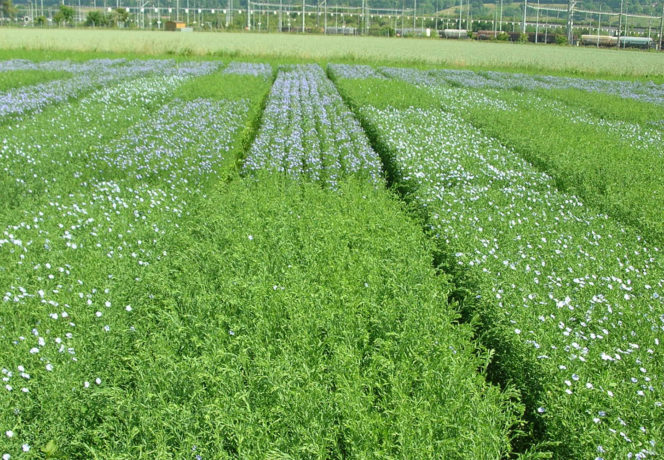
Nitrogen fertilisation of linseed influences seed yield and oil quality
Despite the oilseed production payment, linseed has remained a relatively unimportant oil plant in Switzerland. Nitrogen (N) fertilisation is a core component of linseed cultivation, since linseed is considered to be a fairly undemanding crop, yet one that is susceptible to lodging when over-fertilised with N. With the aim of studying the reaction of recently…

Fusarium species and mycotoxins in silage maize – results of a five-year monitoring programme
within the context of a five-year silage maize monitoring programme (2010–2014) in the cantons of Aargau and Bern, Agroscope investigated Fusarium infection and mycotoxin contamination of silage maize, as well as the influence of cropping factors including variety, previous crop, tillage, and sowing and harvest dates. Out of 169 harvest samples, 167 showed a mean…
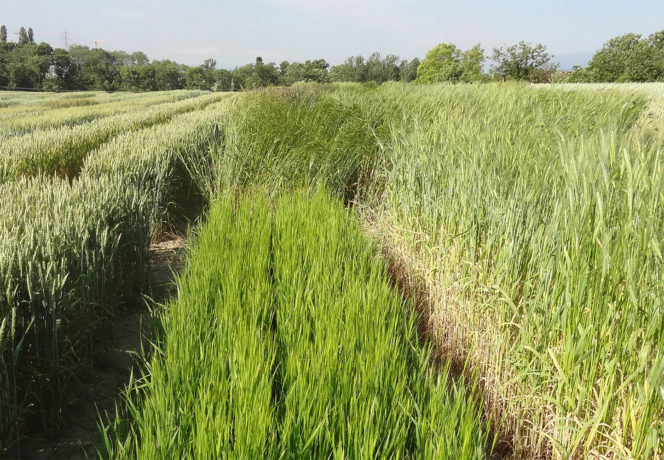
Aptitude of emmer and einkorn varieties for cultivation
Though suitable for breadmaking, einkorn and emmer wheat are hulled grains that are nowadays largely neglected. These cereals are frugal and robust and characterised by high levels of minerals and other elements beneficial for health in the grain. Cultivation of these cereals is feasible, but in-depth knowledge of their agronomic and technical values is indispensable.…
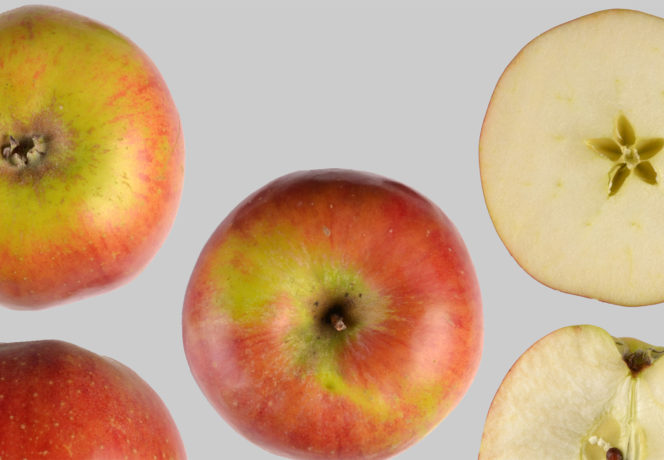
Agroscope apple breeding: methods, results and opportunities for sustainable fruit production
Agroscope apple breeding develops new varieties adapted to the current and future requirements of resilient fruit production. The latest developments in breeding methodology are constantly implemented in order to streamline selection as much as possible. Breeding research at Agroscope, our collaboration with the Chair in Plant Breeding at ETH Zürich and international networking allow for…


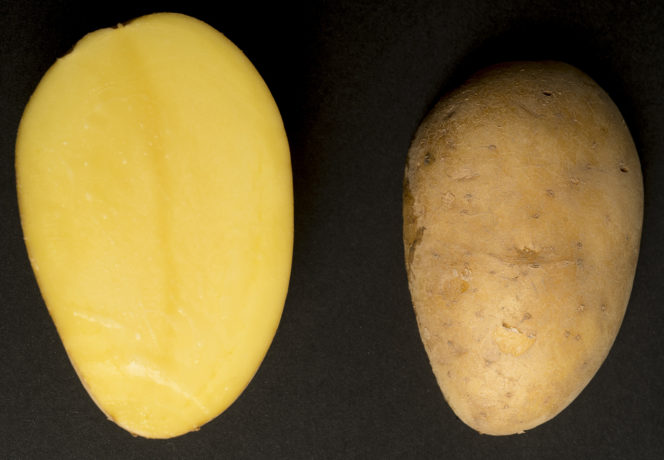

Agronomic potential of ash from recycled wood
The effect of wood ash as a potash fertiliser was tested on perennial ryegrass in a greenhouse. The ash, which was from recycled wood, was spread – in some cases in combination with organic fertilisers – on two types of soil: an acid soil low in available potassium, and an alkaline soil with normal supplies…

High-throughput molecular diagnostics for detecting potato-plant viruses
Every year, Agroscope inspects almost 300 000 tubers for the presence or absence of viruses in order to certify potato plants destined for Swiss producers. From 2016 onwards, this inspection has been performed using real time polymerase chain reaction (RT-PCR) on dormant tubers right after the harvest. The new method allows results to be obtained…

Réglette azote colza®: a decision support tool for rapeseed N management adapted for Switzerland
The Réglette azote colza® is a decision support tool for rapeseed nitrogen fertilization, developed by the French institute Terres Inovia. This tool was designed to determine the nitrogen dose the most adapted to the needs of the crop, based on the rapeseed status at the beginning and at the end of the winter. The parameters…

Cultivation factors influence Fusarium fungi and mycotoxins in Swiss barley
During a 2-year monitoring we observed that the occurrence of Fusarium graminearum and the mycotoxin deoxynivalenol are influenced by several cropping factors. Frequently, not only one but the combination of different factors have to be considered e.g. previous crop and tillage. Thus, the entire cropping system should be taken into consideration to retrieve influencing cropping…

Protein potential of winter wheat varieties
A ‘protein potential’ concept has been developed by analogy with the ‘grain yield’ concept, with the aim of better understanding the factors influencing wheat protein content and identifying the most stable varieties as well as the amount of protein that remains to be reached. The protein potential of 18 varieties of winter wheat covering all…

Phenological development of meadows – 21 years of observations
In spring, the phenological development of meadows influences forage quality, particularly in terms of the digestibility of organic matter. Thus, phenological observations facilitate grassland management during first grass growth. Since vegetation development depends largely on meteorological conditions, long-term phenological monitoring also enables the effects of climate change on vegetation to be assessed. The aim of…

Effects of a new phosphate fertiliser on wheat nutrition and yield
Phosphorus (P) is an essential mineral for plant growth. Given that easily extractable global stocks of P are declining and that P over-fertilisation can be a source of pollution, it would appear necessary to improve the efficiency of phosphate fertilisers in agriculture. Two independent experiments were carried out at Agroscope Changins (Switzerland) and RITTMO-Colmar (France)…

Timothy: two new varieties recommended
Between 2013 and 2015, Agroscope field-tested a total of 21 varieties of timothy (Phleum pratense) as to their suitability for cultivation. Seven of these varieties had already been recommended and served as benchmarks in the trial, whilst simultaneously being required to pass the test again. Yield and digestibility, vigour (density, luxuriance and evenness of the…

Improved performance thanks to sex: Agroscope’s new Kentucky bluegrass varieties
The year 2014 marked the first occasion when two varieties of Kentucky bluegrass (Poa pratensis) from Agroscope’s breeding programme, Selista and Sepia, were included in the Swiss List of Recommended Varieties for Forage Plants. Instead of exhibiting the otherwise usual asexual seed formation (‘apomixis’), Selista and Sepia primarily reproduce sexually, like the known variety Lato.…

Creating a test to measure resistance to soybean
Bacterial blight is a foliar disease caused by Pseudomonas savastanoi pv. glycinea. The disease is characterised by angular leaf spots yet with only little impact on the yield. The seeds constitute the primary source of inoculum, and contaminated seeds may affect the diffusion of new varieties. The best approach to preventing the disease is to…

Non-destructive method for estimating cover-crop biomass
This study presents a non-destructive method for estimating cover-crop biomass, based on field estimation of soil cover and cover height. The estimation of biomass allows to quantify expected services offered by cover crops, such as competition against weed, erosion and leaching reduction, input of nutrients and organic matter. Linear models were adjusted to the data…





Use of economic damage thresholds, forecasting systems and warning services in Switzerland
According to Direct Payment regulations, Swiss farmers are obliged to take into account economic damage thresholds and the recommendations of forecasting and warning services before taking phytosanitary measures. In order to assess how well these requirements were being fulfilled in arable farming, farmers and agricultural contractors were anonymously surveyed in 2013-2014. Out of 477 returned…